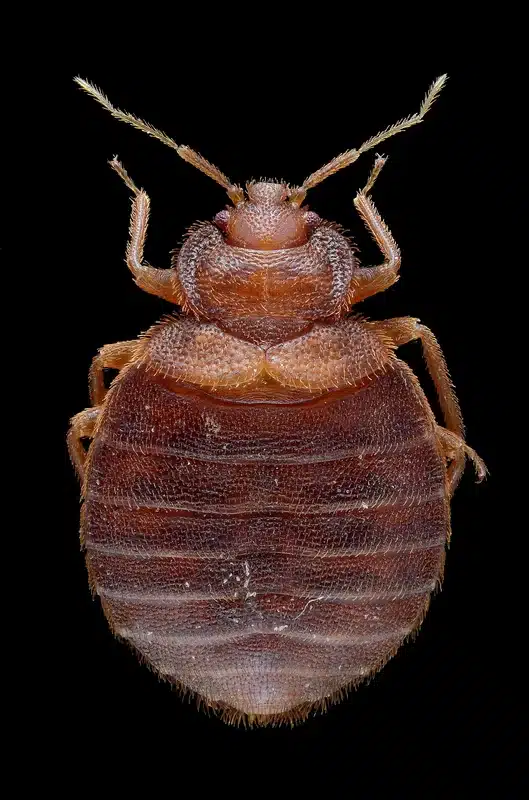Seeing a suspected bed bug in your home can cause immediate panic. After four years as a registered technician and being part of a family business serving the DMV area for over 50 years, I’ve helped countless homeowners identify these pests correctly. Pictures of bed bugs are your best tool for accurate identification, especially since many other insects look surprisingly similar.
The mid-Atlantic region consistently ranks among the hardest-hit areas for bed bug infestations according to CDC surveillance data. Having clear, detailed images helps you distinguish real bed bugs from harmless look-alikes. This saves you from unnecessary worry and helps you take the right action quickly.
What Do Bed Bugs Look Like in Pictures
Adult Bed Bug Images and Key Features
Adult bed bugs measure about 5-7 mm long, roughly the size of an apple seed. In photos, you’ll notice their flat, oval shape that makes them perfect for hiding in tight spaces. When unfed, they appear brown to mahogany colored with a somewhat translucent quality.
The most dramatic change happens after feeding. Blood-engorged bed bugs transform from flat, seed-like insects into swollen, deep red creatures that look almost balloon-like. This transformation often confuses homeowners who expect only tiny insects.
Key features visible in quality bed bug photos include wing pads that don’t function, a 3-segmented beak for piercing skin, and 4-segmented antennae. Additionally, you might spot golden microscopic hairs covering their body surface.
Nymph Pictures Showing Development Stages
Nymph bed bugs progress through five distinct stages before becoming adults. Each stage requires a full blood meal to molt to the next level. Early-stage nymphs appear translucent or straw-colored when unfed, making them incredibly difficult to spot.
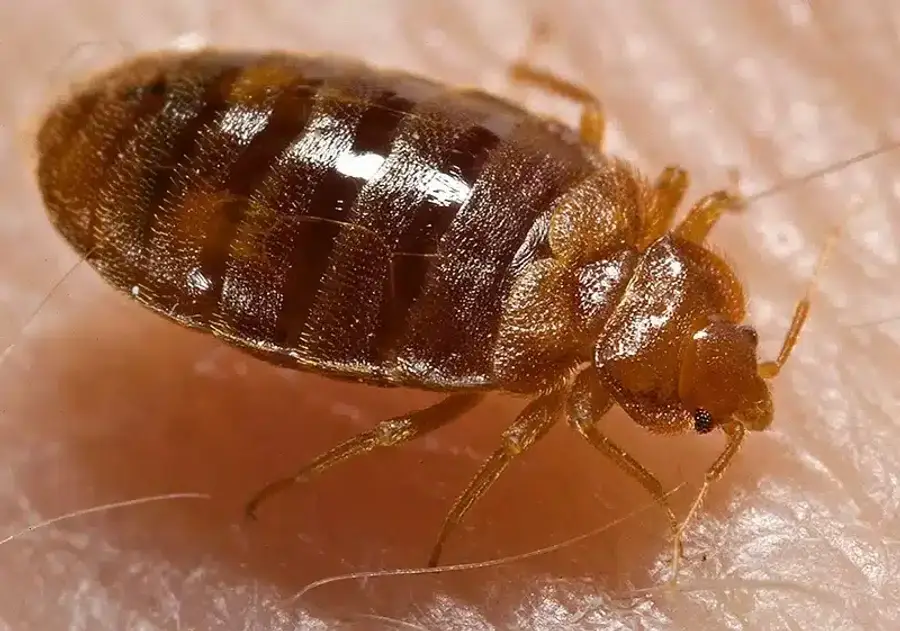
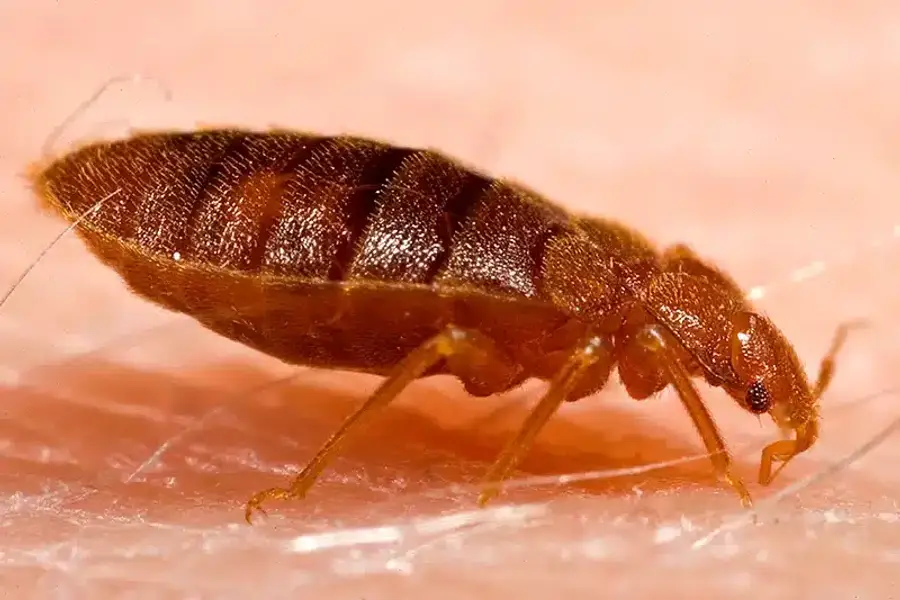
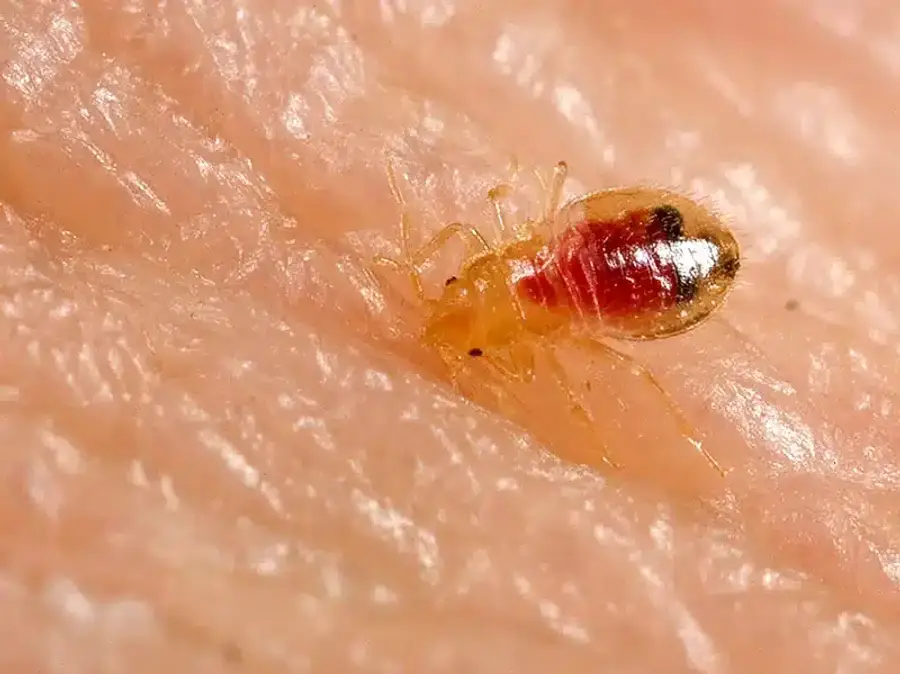

After feeding, nymphs become much more visible with bright red guts showing through their translucent bodies. The smallest first-stage nymphs measure only 1.5 mm, while fifth-stage nymphs reach 4.5 mm before their final molt.
Professional bed bug images often include size comparisons with pennies or rulers. This helps homeowners understand just how tiny these pests can be, especially in their early development.
Egg Images and Typical Placement
Bed bug eggs appear as pearl-white, pin-head sized clusters glued into fabric seams and cracks. Female bed bugs typically lay 1-3 eggs daily in areas close to human sleeping areas. After about 5 days, you’ll notice red eye-spots developing within viable eggs.
These egg clusters often hide in mattress seams, behind headboards, and in furniture joints. Because of their small size and light color, they’re easily missed during casual inspections.
Identifying Bed Bug Bites with Photos
Bedbug Bite Patterns and Symptoms
Bedbug bites often appear in characteristic linear patterns called “breakfast, lunch, and dinner” rows. However, this pattern isn’t universal - some people develop scattered bite marks or no visible reaction at all. About 30% of people show no skin reaction to bed bug feeding.
Bite symptoms typically include pink or red itchy bumps that may develop into larger welts. The bites usually appear on exposed skin areas like arms, shoulders, neck, and face. Most people notice bites appearing 1-3 days after being fed upon.
Bite Variations on Different Skin Types
Bed bug bites present differently depending on individual skin sensitivity and tone. On lighter skin, bites often appear as distinct red bumps with clear borders. On darker skin tones, the marks may appear darker or less defined but still cause similar itching sensations.
Some sensitive individuals develop severe allergic reactions including large rashes, blistering, or widespread inflammation. If you experience difficulty breathing or severe swelling, seek medical attention immediately.
Signs of Infestation Beyond Live Bugs
Fecal Spots and Shed Skins in Pictures
Bed bug fecal spots appear as small, dark dots that bleed like ink when touched with a damp cloth. These spots concentrate around hiding spots where bed bugs rest during daylight hours. You’ll often find them along mattress seams, behind headboards, and in upholstered furniture.
Shed skins or exuviae look like tan, paper-thin husks scattered around harborage areas. Because nymphs molt five times during development, you might find multiple shed skins in a single location. These signs often persist long after successful treatment.
Photos of Common Harborage Areas
Mattress seams provide the most common hiding spots for bed bugs. Look carefully along the head of the bed where the mattress cover meets the box spring. Bed frames, especially wooden ones with joints and cracks and crevices, offer additional shelter.
Other prime locations include behind picture frames, inside alarm clocks, behind loose wallpaper, and in furniture joints. Basically, any crack wide enough to slide a credit card into could hide bed bugs.
Similar to how we identify small roaches, bed bugs prefer areas that provide both shelter and easy access to food sources.
Distinguishing Bed Bugs from Look-Alike Insects
Bat Bugs and Swallow Bugs vs Bed Bugs
Bat bugs appear nearly identical to bed bugs in standard photos. The key difference lies in longer fringe hairs on the pronotum (the area behind the head). This characteristic requires magnification to see clearly, making professional identification often necessary.
Both bat bugs and bed bugs have the same basic body structure, feeding habits, and size. However, bat bugs typically only become a problem when their natural hosts (bats) are present in attics or walls.
Fleas, Cockroach Nymphs, and Carpet Beetles
Fleas have laterally compressed bodies that allow them to jump significant distances. In contrast, bed bugs crawl exclusively and cannot jump or fly. German cockroach nymphs move much faster than bed bugs and possess long cerci (tail-like appendages).
Carpet beetle larvae appear fuzzy and bristly rather than flat and smooth like bed bugs. They also feed on fabric fibers rather than human blood. Learning to spot these differences prevents costly mistake in identification.
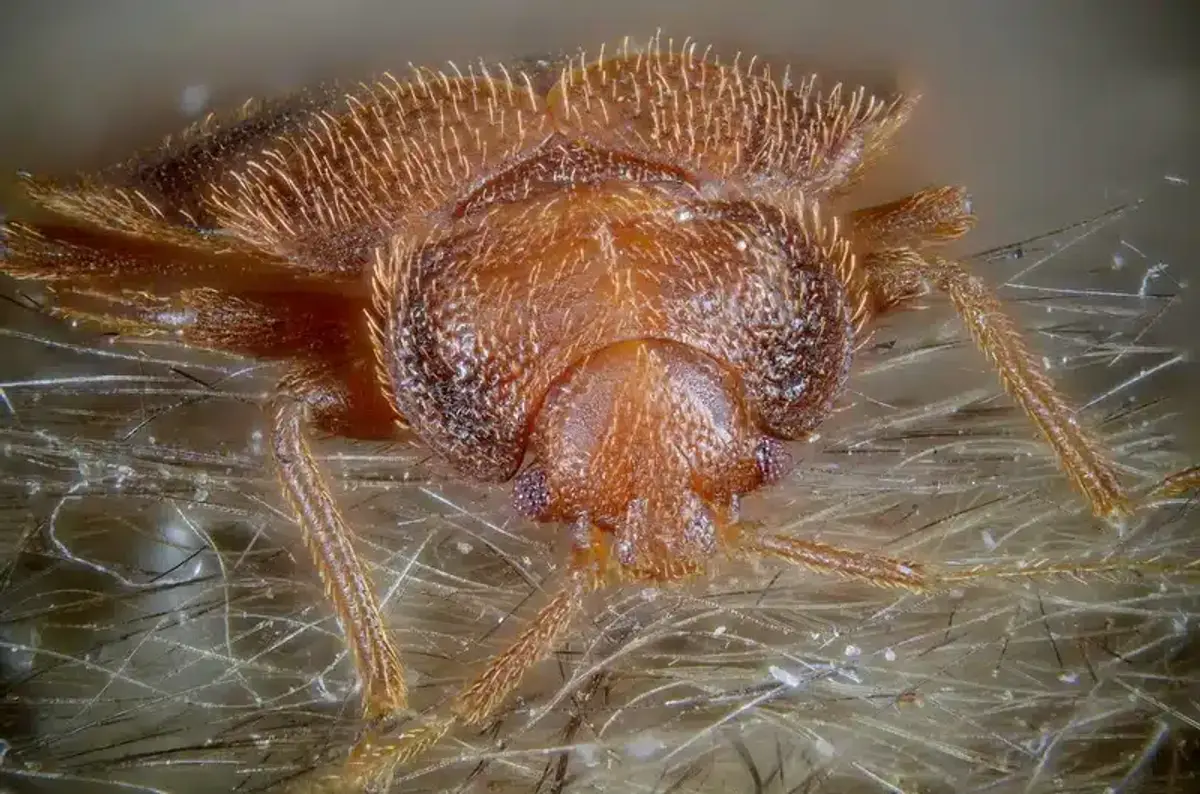
Just as we help homeowners distinguish between centipedes and silverfish, proper bed bug identification requires attention to specific details.
How to Document Suspected Bed Bugs
Photography Tools and Techniques
Accurate identification starts with proper documentation. Use a flashlight and thin card to probe mattress seams, box spring areas, and furniture joints. Take photos with good lighting that show size relationships - include a coin or ruler for scale.
Vacuum sampling with a nylon stocking insert allows you to collect specimens safely. This method captures both live bugs and shed skins for professional examination. The first step should always be careful inspection rather than immediate pesticide application.
Using Reference Images Effectively
When comparing your photos to reference materials, look for royalty-free images from university extension services or EPA publications. These source materials provide accurate, labeled specimens rather than misleading stock photos.
Avoid relying solely on image searches that might return mislabeled or outdated photos. Instead, use authoritative sources like Virginia Tech Extension for verified bed bug identification guides.
Treatment Strategies
Effective Treatment Options
Treatment approaches focus on eliminating all life stages from egg to adult. Heat treatments, steam applications, and targeted pesticide placement work better than broad-spectrum spraying. We use products like Essentria that have passed through our internal research team.
Encasing mattresses in protective covers prevents future infestations while making detection easier. Wash all linens and clothing in hot water (120°F minimum) and vacuum thoroughly around sleeping areas.
Prevention Measures


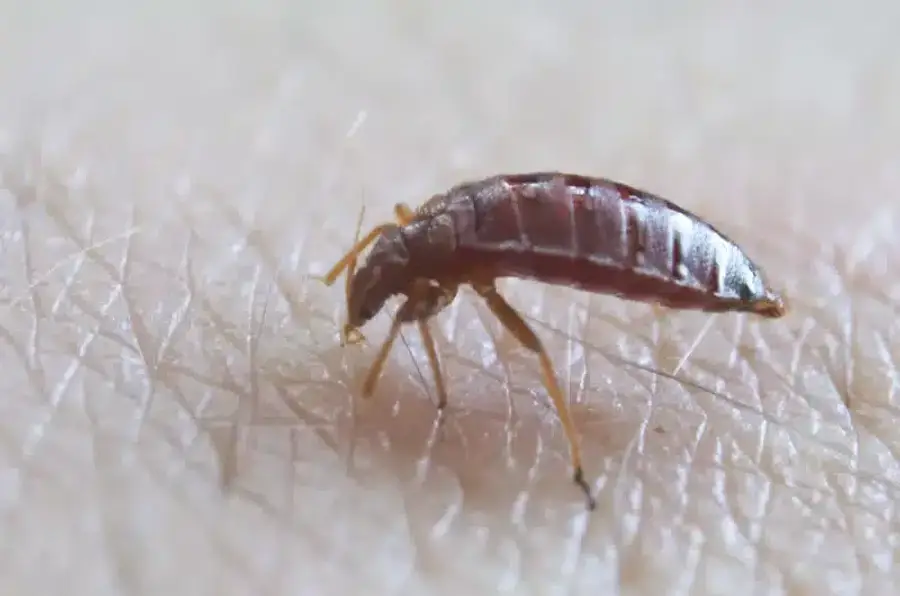
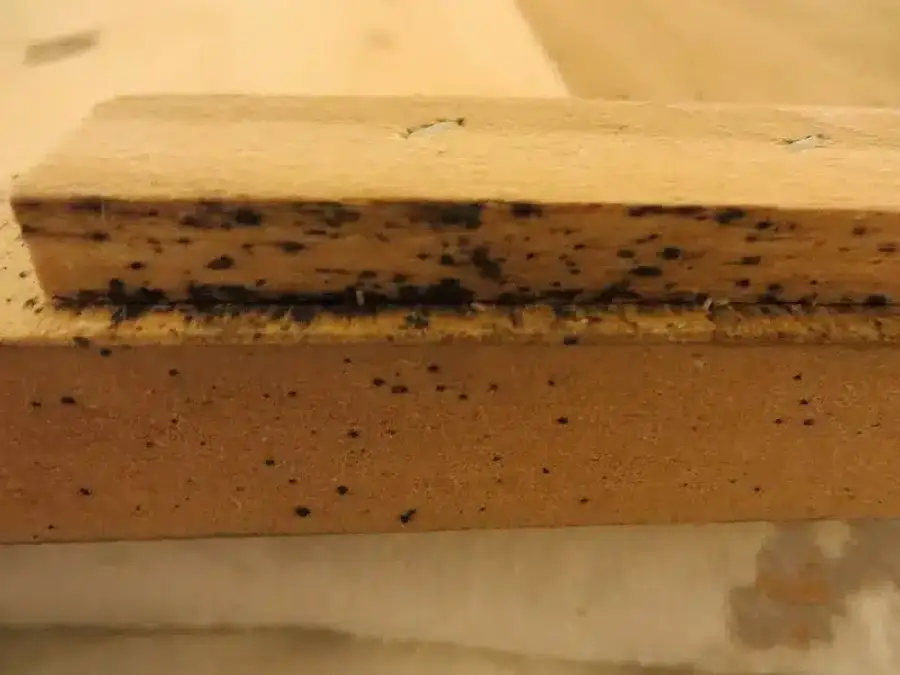
Prevention starts with careful inspection of used furniture before bringing it inside. Examine seams, joints, and any cracks where bed bugs might hide. When traveling, inspect hotel rooms before settling in, especially around the headboard area.
Seal obvious entry points and maintain good housekeeping around sleeping areas. However, remember that bed bugs aren’t attracted to dirt - they’re attracted to the CO2 and warmth that humans produce.
For homeowners dealing with other household pests, our guides on tiny brown bugs in bathrooms and baby roach identification provide similar visual identification approaches.
Expert Tips for Accurate Identification
Recognizing Characteristic Features
The characteristic features that separate bed bugs from other insects include their distinctive beak structure, wing pad arrangement, and antenna segmentation. Fed bed bugs also emit a musty-sweet odor when disturbed or crushed.
Pay attention to behavior patterns as well. Bed bugs move relatively slowly compared to species like fleas or young cockroaches. They also tend to expose themselves only during nighttime feeding or when harborage areas become overcrowded.
When to Seek Professional Confirmation
If you’re uncertain about what you’ve found, don’t avoid getting professional help. University diagnostic labs like those at University of Maryland Extension accept specimens for identification confirmation.
Control efforts based on misidentification waste time and money while allowing real problems to worsen. When in doubt, contact experienced pest control professionals who accurately identify insects daily.
Similar identification challenges occur with other household pests, which is why we’ve developed guides for what do mosquitoes look like and ant species recognition.
Common Identification Mistakes to Avoid
Misreading Physical Evidence
Many homeowners mistake other dark spots for bed bug fecal stains. Food stains, ink marks, or mold growth can look similar in photos. The key test involves dabbing the spot with a damp cloth - bed bug feces will bleed like ink.
Egg identification also causes confusion. Tiny white particles might be lint, dust, or other debris rather than actual bed bug eggs. Real eggs have a characteristic pearl-like appearance and stick firmly to surfaces.
Problems with Unverified Photo Sources
Stock photo libraries often contain mislabeled or misleading images. Some show carpet beetles, fleas, or other insects labeled as bed bugs. Always verify your source and look for images from university extension services or government agencies.
Yellow or pink tinted photos can distort actual bed bug coloration. Look for images taken under natural lighting conditions that show true colors and size relationships.
Whether you’re dealing with suspected bed bugs or trying to identify pantry moth eggs, using verified reference materials makes all the difference in accurate identification.
Frequently Asked Questions
How can I tell if a bug is a bed bug?
+
Look for the characteristic flat, oval shape about the size of an apple seed. Adult bed bugs have a 3-segmented beak, 4-segmented antennae, and wing pads that don't function. Fed specimens appear swollen and dark red, while unfed bugs look brown and flat. The key is examining multiple identifying features rather than relying on size alone.
What kills bed bugs instantly?
+
No treatment provides truly instant results across all life stages. Heat treatments above 120°F work fastest, followed by steam applications to cracks and seams. EPA-approved pesticides like those in our treatment programs require time to work through the entire population. Be wary of products claiming instant elimination - effective control requires comprehensive treatment of all hiding spots.
What bug can be mistaken for a bed bug?
+
Bat bugs look nearly identical except for longer pronotal hairs visible under magnification. Carpet beetle larvae appear fuzzy rather than flat, while fleas can jump and have compressed bodies. German cockroach nymphs move faster and have long tail appendages. Comparing detailed photos helps avoid misidentification mistakes.
What causes bed bugs to come?
+
Bed bugs spread primarily through travel and used furniture rather than poor sanitation. They're attracted to human warmth, CO2, and blood - not dirt. Common introduction paths include luggage from infested hotels, second-hand mattresses, and visitors from infested homes. Once established, they reproduce rapidly if left untreated.
Can I identify bed bugs from bite photos alone?
+
Bite identification alone isn't reliable since many insects cause similar skin reactions. About 30% of people show no bite symptoms at all, while others develop severe rashes from various causes. Bedbug bites usually appear in linear patterns, but confirmation requires finding actual insects, fecal spots, or shed skins.
Where should I search for bed bug evidence?
+
Start with mattress seams and box spring areas, especially at the head of the bed. Check bed frames, headboards, and nearby furniture joints. Look for fecal spots, eggs, shed skins, and live insects in cracks and crevices. Hiding spots extend beyond beds to include picture frames, electrical outlets, and upholstered furniture.
Should I treat a suspected infestation myself?
+
DIY treatment often fails because it doesn't address all life stages and hiding spots. Professional pest control provides comprehensive inspection, accurate identification, and targeted treatment plans. Our registered technicians use products that have passed through our internal research team, ensuring effective results while being appropriate for homes with families and pets.
How do I prevent bed bugs from spreading?
+
Seal known harborage areas and wash potentially infested items in hot water above 120°F. Vacuum regularly around sleeping areas and inspect used furniture before bringing it inside. When traveling, examine hotel rooms and keep luggage in hard-surfaced areas rather than on beds or upholstered chairs. Early detection prevents small problems from becoming major infestations.
With five years of hands-on experience in the pest control industry, George Schulz is a registered technician with the Virginia Pest Management Association and a proud third-generation professional in a family business that's been protecting homes for over 57 years. He manages and trains a team of service pros while also leading internal research efforts—recently spearheading a deep-dive review of thousands of documents on pest control materials to hand-pick the most kid and pet friendly, most effective solutions tailored specifically for homes in the DC metro area.
